Here are the key Automotive Logistics insights from Torsten Müller (Audi), Adam Jones (Unipart Group), and Gabriel Werner (Blue Yonder) on digitalisation, automation, AI, the role of data, and sustainability from ALSC Europe 2024.
ALSC Europe 2024 in Bonn, Germany held an exciting panel discussion on the challenges and promises of accelerating digital, automated and greener supply chains, offering a treasure trove of insights from experts across vehicle logistics from diverse occupations and perspectives. Many logistics companies know that they want to automate and digitalise, but many are uncertain as to how, and at times even why. This is where ALSC Europe excelled.
Challenges and opportunities in automating logistics
For Torsten Müller, senior director, Supply Chain International, Audi, one of the main challenges in automating aspects of vehicle logistics stems from cost pressures. “Firstly, if you want to automate something, you can’t get investment back for a couple of years,” he said. A simple yet overlooked factor in the automation question. And this is just in terms of planning for launch.
Müller said that in order to implement with any success, “you first need to understand the actual running costs”. Audi, part of VW Group, is currently working on a clear strategy, with Müller adding, “you also need a clear strategy in order to convince your shareholders”.

For Adam Jones, director, Sector Strategies, Unipart Group, “to start off with, it’s about choosing the right automation”. But which one do you choose? Jones said one of the main issues is that OEMs tend to get automations “thrown at [them] all the time,” when the key is figuring out which are more suitable for the organisation’s needs. He said the situation is even more pronounced for warehousing solutions, which can come in the form of everything from Autonomous Manoeuvrable Robots (AMR) to Auto Stores, which he described as “a minefield” for automation potential. The key here is relevance in line with organisational objectives.
“And Torsten makes a good point,” he says, “it isn’t a two-year payback. We need to make informative decisions on what automation actually is, what the best supply chain use-cases are, and what the payback is.”
But once discerned, how can this be made to successfully fit into the overall ecosystem? “It’s about having a digitisation and automation roadmap, and even with digitalisation feeding into automation, ” says Jones. He points out that due to technological change, and with the emergence of solutions like digital twins, organisations are now in a position to look at processes offline.
“We can digitise it, and fit automation on top of that, and make really informative decisions on which automation is going to make the biggest impact, and even what the ROI is, how long it’s going to take, and whether it’s going to result in production savings, or net profit savings.” Automation has the power to transform if embedded with clarity, vision and purpose.
Data: The logistical lifeblood of automated and digitised ecosystems
And for modern automotive logistics, automation is firmly embedded in digital solutions, and the lifeblood of digital solutions is data. “So before actually looking into automation,” Jones said, “successful implementations are primarily about looking at the data. That’s the biggest challenge.”

Jones also pointed out that one of the advantages that third party logistics firms (3PLs) have lies in the fact that they’ve made the mistakes that allow them to offer their expertise.
Müller agreed, adding: “It’s very important to first understand the data that you have, and then to take key steps based on that data. But you need to understand which data is necessary, and why, because understanding which information you actually need will help you to understand supply chain risks.” Audi is currently focused on using digital twins to achieve this outcome.
Digitalisation: Embodying advancements in automotive logistics
Jones said that Unipart has spent 15 years trying to find the perfect IT platform. “But the question is, how do you knit all these systems together to get the right solution? Unipart is now in a kind of utopia where we are able to achieve this integration with our partners and technologies. This is the beginning of digitalising,” he said. And just as there are varying levels of digital integration across logistics companies themselves, there are also many differences between regions.
Read more from logistics leaders on key topics tackled at ALSC Europe 2024
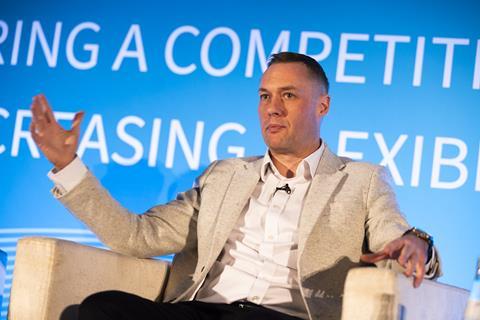
Gabriel Werner, vice-president of manufacturing, Blue Yonder clarified the picture. “In Europe, the state of digitalisation is actually very heterogeneous,” he said. “Statista has a ranking of digital competitiveness, where the US takes top spot, with Germany coming in at twenty-third!” He pointed out that Scandinavia, Benelux, the rest of Europe, and even Austria are ahead. “I would argue that if you look at system landscapes, you see that there are many systems.
“Interoperability then is completely your responsibility, and this introduces brittleness, (since somebody needs to look after them) and latency. This is a major inhibitor in terms of digitalisation,” he said.
Is Artificial Intelligence a smart move for logistics and supply chains?
One insight that the ALSC panel made clear, was that at the peak of digitalisation sits AI, and automotive logistics firms know that they want to reap the benefits of this computational power, but many are uncertain as to how to implement it across aspects of their ecosystems. Müller agreed that key steps towards digitalisation will invariably include the deployment of Artificial Intelligence, “but if you merely optimise one step of the process with AI, it will not bring benefits. The idea is to think bigger; to think top-down,” he said.
“To really be successful, it’s important to think about the entire process, and then to ask, ‘do we have the chance to modify and really simplify the process by using AI?’ This is the key.” Coming at the issue from a slightly different angle, Werner addressed the audience, saying, “I don’t know how you all feel, but in terms of AI, I’m already a little bit tired of the hype, to be honest.
“Companies are popping up like mushrooms making extraordinary claims about what AI can do, and what benefits it can bring, but the moment you start to ask it probing questions, it comes up quite thin, quite quickly.”
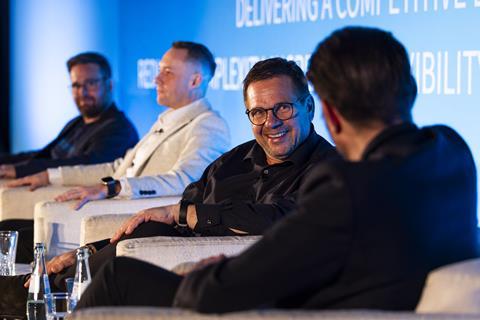
Werner said that this state of affairs was particularly frustrating for BlueYonder, which has been commercially offering its own predictive AI in a supply chain context for more than 15 years and “before it was cool”. To solve the seeming lack of AI creativity and “thinness”, BlueYonder is in its third generation of developing its own Machine Learning (ML) algorithms, to avoid the limitations of mainstream and generic algorithms that anyone can choose from. Despite these misgivings, AI’s potential to supercharge supply chains and logistics is irrefutable, but it can only achieve this potential with the right implementation.
“We believe AI is a highly transformative technology akin to going from steam engines to electricity,” Werner said. “But when steam engines were replaced by electric engines, nothing happened in terms of productivity. It only started to change when we realised that the factory layouts no longer needed to follow the power source and transformed them to follow the material flow.
“In the same way, we need to transform predictive AI to flow around demand forecasting. If all you do is replace a single variant with multi-variant procedures (that is ML), then you are not actually digital; you are moving from steam to electricity, but that’s all.
“However, if you were to use all the manpower that you are using in your consensus process to curate the data you are using to feed your ML prediction engine in the first place, then you bring about a shift in how you operate and reap the benefits. That’s when you actually make progress.” A valuable insight for the still untapped potential of predictive AI in enhancing automotive logistics.
Jones added that for Unipart, AI is beneficial because of “its power to utilise large amounts of data and its ability to churn out multiple scenarios”. But pointing to the balance between human and machine labour forces, he said: “No doubt, AI is great, and it’s something that organisations need to implement. But the reason that we are all sitting in this room is that you still use and need the insights garnered from years of experience.

“So don’t underestimate how important you all are in the supply chain to make the right decisions,” he added. “Because if we left it to robots, things would go wrong. AI has a part to play, especially in analysing data, however the people in logistics still have to make the right decisions in how to use it.” And once again we find that whenever we are talking about automation or digitalisation, that is about any logistics solution which seems to be wholly impersonable, we find ourselves talking about people, who, as any competent executive understands, make up the foundation.
Other than manning the ship, people in logistics are also dealing with the onboarding challenge which stems from human anxieties surrounding AI implementation. Jones explained that when Unipart first began putting cobots or even AMRs into its solutions, “people were looking at them and saying, ‘these are going to take our jobs’. So, what we actually did was put a cobot in the centre of our warehouse to let people see it in action, to interact with it, to see how it benefited them as a support mechanism and explain why Unipart was implementing it.”
This could be achieved, according to Jones, “as long as you can get people to embrace it by understanding why you’re doing it”. Automation is something that people definitely need to “lean into,” he said.
Driving sustainable supply chains with the power of digitalisation
The potential of digital supply chains extends beyond bottom-lines. Digitalisation has the power to bring about significant positive changes in sustainable logistics and supply chains, and we can’t ignore the role of data. “People are right in saying that data is the new gold,” said Jones, “but organisations treat it as bronze. But it has the power to seriously transform the supply chain.”
He emphasises that we are able to use digitalisation for sustainability from end to end and even across scopes. “We can plan in advance with digital twins and get an idea of sustainability,” he said.
But effective sustainability lies beyond simple digitalisation and data, since data doesn’t necessarily mean communication. For that, again, a human touch is needed. He added, “I’m surprised that organisations, even those which are part of the same group, don’t really talk to each other. We need to combine forces. We see competitors who we thought would never work together, collaborating to solve sustainability challenges.”
On the material side, Müller said that Audi’s idea is to use one-way packaging more than once to make it returnable, and bring about a circular economic solution. “We also have ideas for BiW by sending the same packaging three times or more,” he said. Audi has started a pilot process to bring this about.
Werner says that if you think about it, if you do your supply chain planning well, then you’ve already had an impact. “For example, if you optimise your routes, you are going to use less fuel.” BlueYonder has been strong in “multicriteria optimisation,” an approach which all logistics companies should consider. “So, we are adding criteria into the engines themselves that look for that sweet spot between commercial objectives and sustainability objectives. We are building sustainability into the landscape.”






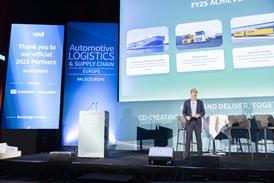


















![Global[1]](https://d3n5uof8vony13.cloudfront.net/Pictures/web/a/d/s/global1_726550.svgz)

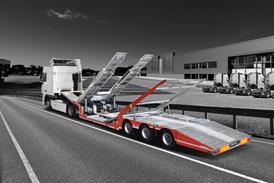


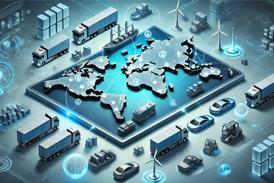
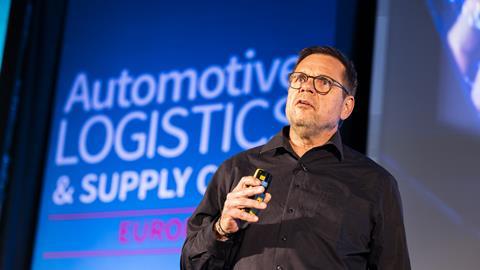

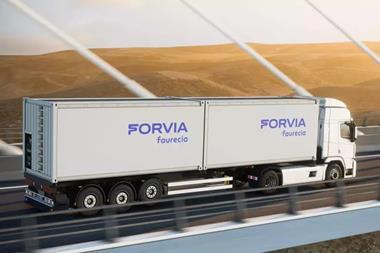
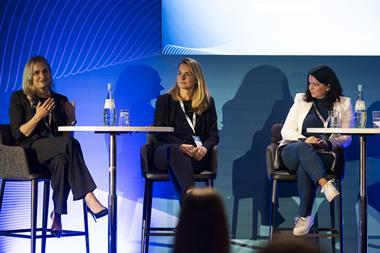
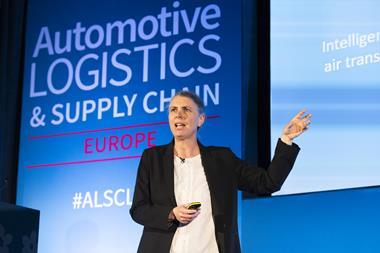
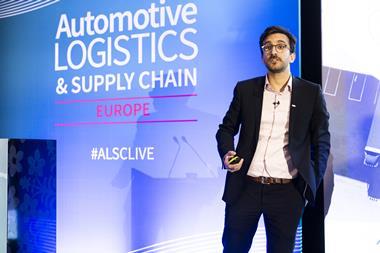




No comments yet